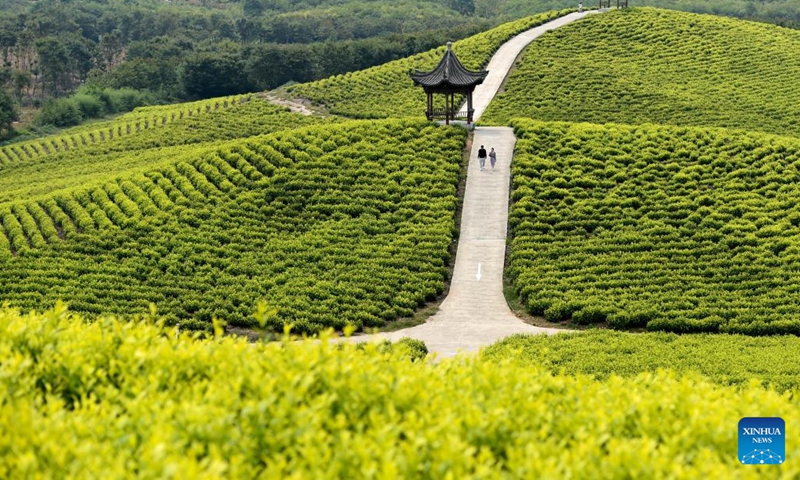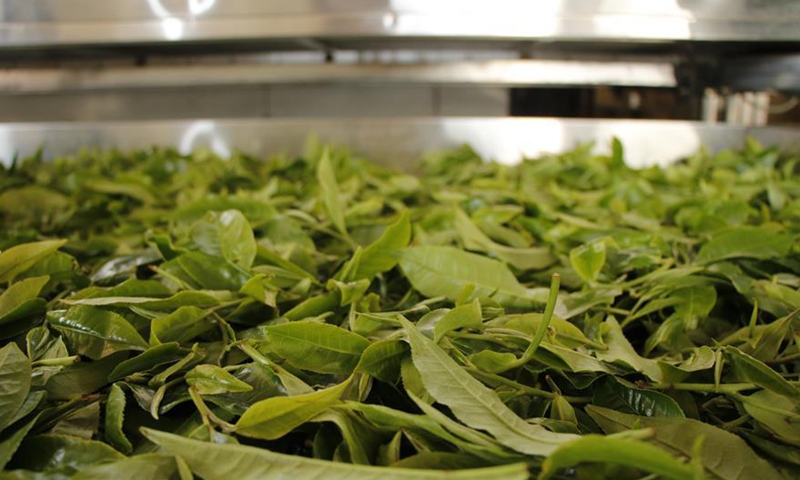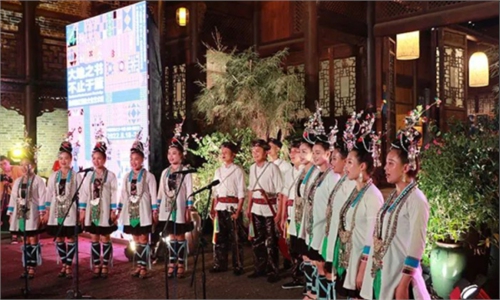ARTS / ART
China’s traditional tea processing techniques added to UNESCO list of world intangible cultural heritage

Tourists visit a tea garden of a scenic spot in Langxi county of Xuancheng city, East China's Anhui Province, September 27, 2022. Photo: Xinhua
Chinese traditional tea processing techniques were officially recognized by the United Nations Educational, Scientific and Cultural Organization (UNESCO) on Tuesday, when the techniques and associated social practices were added to the Representative List of Intangible Cultural Heritage for Humanity. China maintains its No.1 position with 43 items.
The list recognizes the knowledge, skills, and practices concerning management of tea plantations, picking of tea leaves, manual processing, and the drinking and sharing of tea.
Tea is ubiquitous in Chinese people's daily life. Steeped or boiled tea is served in homes, workplaces, tea houses, restaurants and temples, forming an important element of communication in socializing and ceremonies such as weddings and sacrifices.
Based on natural conditions and local customs, Chinese tea producers have developed six categories of tea - green, yellow, dark, white, oolong and black - and there are other varieties like flower-scented teas, and more than 2,000 tea products.
The application to be added to the list was jointly submitted by different organizations related to diverse kinds of tea around China, including the Cultural Center of Wuyishan, which is responsible for safeguarding Wuyi Rock Tea (Dahongpao Tea) processing techniques, and the Longjing Tea Industry Association of Xihu district in Hangzhou, East China's Zhejiang Province, which is responsible for Green Tea (West Lake Longjing Tea) processing techniques.
China's tea culture has nurtured social practices, traditional skills and handcrafts. It reflects Chinese people's values of modesty, harmony and respect. It also facilitates exchanges and mutual learning among civilizations connected by the Silk Road, thereby playing a significant role in social development, according to the application.
The inclusion in the UNESCO list can also help in better protecting and handing down the techniques and associated tea culture. Huang Qingsui, a Zhuang ethnic art designer, who often visits different places around the country to collect traditional patterns of Chinese ethnic groups, told the Global Times that when he arrived in Southwest China's Yunnan Province, he could see the local endeavor in conservation of tea gardens.
China already had 42 items of intangible cultural heritage. Kunqu Opera was the first added to the list in 2001, being joined later by Peking Opera, papercutting techniques and the Dragon Boat Festival.

Tea leaves are being dehydrated after preliminary selection in Laobanzhang village of Menghai county in Xishuangbanna Dai Autonomous Prefecture, Southwest China's Yunnan Province, May 30, 2020. Menghai county is a famous Pu'er tea growing area with a long history of tea planting, making, using, drinking and trading. In Laobanzhang village of Menghai county, some local tea farmers inherit and retain the traditional hand-made tea techniques. The hand-made tea produced by local farmers is popular in the market. Photo:Xinhua

